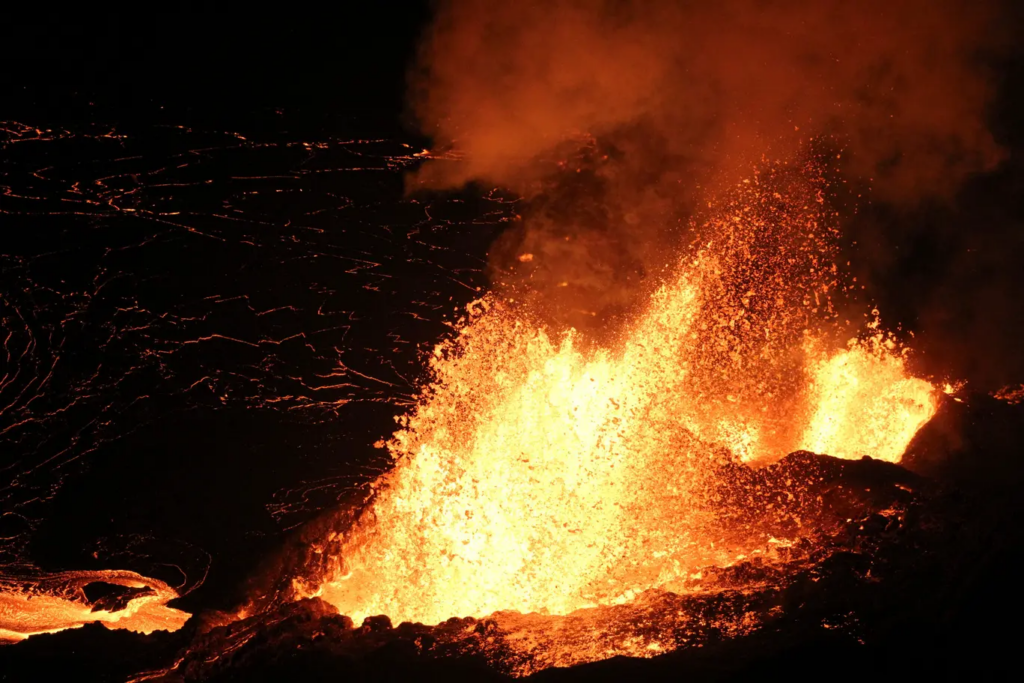Hawaii's Kilauea volcano has become active again, entering its 10th eruption. Scientists are monitoring the volcano's ever-changing behavior and have issued warnings. The eruption has caught the attention of volcanologists worldwide, as Kilauea has been one of the world's most active volcanoes for decades.
Eruption details and current situation
The United States Geological Survey (USGS) said that Kilauea has begun erupting, and lava flows have become active. Bright red-orange lava flows are emerging from the volcano's crater, which are clearly visible in the darkness of the night. According to experts, this lava flow is currently limited to the main crater of the volcano, but it is feared that its spread may increase.
Experts from the USGS said that the eruption is releasing large amounts of sulfur dioxide into the atmosphere, which could cause air pollution. Local administrations and emergency services have already issued warnings and asked people to maintain a safe distance.
History of Kilauea: A Dangerous Volcano
Kilauea Volcano is one of the oldest and most active volcanoes in the world. It is located in the Hawaiian Islands in the Pacific Ocean and is one of the main natural attractions of the island of Hawaii. It has erupted several times over the past few decades.
- 2018 eruption: One of the largest eruptions in Kilauea's history occurred in 2018. Lava flow continued for months, destroying many homes and forcing the evacuation of thousands of people.
- 2023 eruption: Kilauea last erupted in June and September 2023. However, they were short-lived and had relatively little impact on the surrounding environment.
Impact of the eruption: Environment and public life
Such volcanic eruptions can pose several challenges for local populations.
- Air pollution: Lava eruptions release sulfur dioxide and other toxic gases into the atmosphere, which can cause respiratory problems.
- Dangers in the surrounding area: If the lava flow is widespread, it can damage settlements, roads, and farmland.
- Earthquake risk: Due to volcanic activity, earthquakes may be felt in the surrounding area, which can cause additional panic in public life.
Observations and warnings of scientists
Experts believe that Kilauea's current eruption could be prolonged, but the direction and intensity of the lava flow depend on the situation. The USGS and local administration are constantly monitoring the volcano's movements and are prepared for any emergency.
The Hawaiian government has advised local residents to be vigilant and is planning to evacuate people from areas that could be affected by the eruption.
The eruption of Kilauea is important for global volcano research and a cause for concern for local people. Scientists hope that through caution and proper preparation, the damage from this disaster can be minimized. However, Kilauea's history shows that it can sometimes cause long-term and widespread damage, so the situation is being monitored very carefully.
4o


